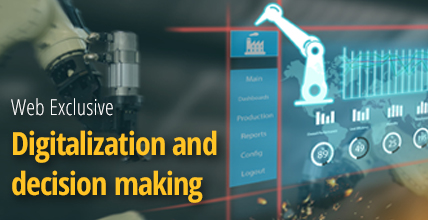- By Bill Lydon
- Web Exclusive
Summary

A large forcing factor is high-volume commercial products that are creating rugged, high-reliability, electronic components and sensors that are being applied to innovative industrial automation offerings. Cell phones and fitness trackers are two great examples of high-volume products contributing to this trend. Fitness trackers (i.e., FitBit and Apple Watch) are complete supervisory control and data acquisition systems on your wrist with sensors, display, communications, edge processing, human-machine interface, and a free cloud historian.
To be successful during times of significant change such as this, conscious and deliberate decision making is required. It is essential for automation professionals to step forward, making sound decisions and providing thought leadership in their organization for others to make informed decisions. These are important decisions that affect the viability and competitiveness of manufacturing and production organizations, since business models are undergoing change that must be supported by appropriate new automation and digitalization to be successful.
Complicating decision making is a flood of information and high-powered marketing campaigns from automation suppliers urging investment in their specific products and a wave of new solutions from nontraditional suppliers. There is real value in some of these offerings, but the most important criteria is deciding how they enable you to achieve your organizations goals. While new technologies are opening new levels of productivity, making major investments in these new technologies without rethinking your entire manufacturing processes could lead to rash, costly purchasing decisions that negatively impact your company. Automation professionals have a responsibility to be mindful of their employer’s best interests by thinking through how to achieve the goals of the organization. Successful digitalization requires the integration of enterprise and production that can only be achieved by collaborating with stakeholders including operations, manufacturing engineering, and information technology.
Poor decision making and execution can undermine the most carefully planned change.
Why is change so difficult?
Digital transformation involves many key decisions based on a new set of facts, including redefining existing manufacturing and production processes, validating new processes, and evaluating technologies. It can feel like juggling several balls at once. Choosing the best course of action while assessing and mitigating risks are obvious considerations. The human factor is also important in an organization undergoing change, which usually provokes an immediate reaction of fear and skepticism from many participants.
Once the value of new initiatives begins to materialize, people feel optimistic, even exhilarated. Later, as new obstacles appear, they become anxious and pessimistic again. With change we can unconsciously seek out and believe information that confirms our opinions, while ignoring or downplaying information that contradicts them.
It is helpful to periodically ask, what is the current reality? This needs to be done by inspecting the facts without editorializing or personal bias to understand what is really happening. This sounds simple but, in many cases, takes some real thinking and hard questions that will lead to clear thinking. This is very similar to root cause analysis used to solve problems.
Every decision depends on information. When there are times of change, relevant information is not always obvious. This creates the need to keep an open mind, asking questions, and seeking more information.
There is an irony of have long-time, reliable suppliers. In times a change, they may not be the best choice going forward, since many times adoption of new technologies and methods drive against their short-term profitability. This makes it very important for automation professionals to sort out the best alternatives. It is important to keep in mind that your organization’s success is to some extent dependent on the suppliers you choose, balancing criteria including reliability, quality, and most importantly helping you achieve your goals to be the most competitive manufacturing or production company in your industry.
There is a worldwide revolution happening in industrial automation that is likely to result in new manufacturing and production company leaders in many industries. History rhymes, and over the years in times of change the pattern has been repeated. The automotive industry is a prime example, with Henry Ford (production line) and later Japanese vehicle manufacturers (advanced automation and management methods) upsetting the industry.
Informed and proactive automation professionals are an essential part of manufacturing and production companies remaining successful in the future.
Reader Feedback
We want to hear from you! Please send us your comments and questions about this topic to InTechmagazine@isa.org.


